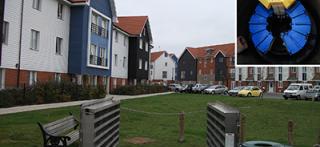
Downstream Defender protects waterways and wildlife in Richmond Park
A Downstream Defender® stormwater treatment system is helping to improve the status of the Beverley Brook, which runs through Richmond Park.
Situation
The Beverley Brook is a 14.3 km (8.8 mi) long river that passes through Richmond Park on its way to the Thames. It was failing its target of 'Good Ecological Potential' under the Water Framework Directive (2000/60/EC) (WFD) as a result of extensive physical modification resulting in a straightened, widened, and deepened channel and domestic and urban discharge, which affects water quality and the survival of aquatic organisms.
Problem
Research has shown that urban road runoff, which includes heavy metals, Polycyclic Aromatic Hydrocarbons (PAHs) and nutrients, is the cause of major fish kills in Beverley Brook, as well as a major contributing factor to failing WFD status.
Solution
As part of Beverley Brook Catchment Partnership plans to improve the status of the Beverley Brook, a range of restoration and mitigation measures have been carried out in the park by the South East Rivers Trust (SERT) over several years. Projects have been funded by The Coca-Cola Replenish Fund, DEFRA (Environment Agency), The Royal Parks and The Friends of Richmond Park.
The SERT has worked with Hydro International to install (2017) and monitor (2018 – ongoing) the performance of the Downstream Defender®, an advanced hydrodynamic vortex separator that offered a ‘plug-and-play’ solution by removing fine and coarse sediments, hydrocarbons and floatable debris from stormwater runoff that would normally discharge directly into the brook during periods of high rainfall.
Hydro International worked with us to design and size the Downstream Defender® for Richmond Park, and were always available with expert advice throughout the project," said Toby Hull, Head of Operations at the South East River Trust. "The monitoring work being undertaken on the Downstream Defender® and Constructed Wetland performance is clearly showing the amount of pollution that is being prevented from entering the Beverley Brook.”
We estimate that approximately 5,000 kg [11,000 lbs] of contaminated sediment was trapped by the Downstream Defender in a single year, said Dr Samantha Hughes, Senior water and Land Stewardship Officer at SERT. "An estimated 27.5 kg [60.6 lbs] of Aluminium and 2.1 kg [4.6 lbs] of Zinc was trapped and prevented from entering the Beverley Brook over the sampling period.

















